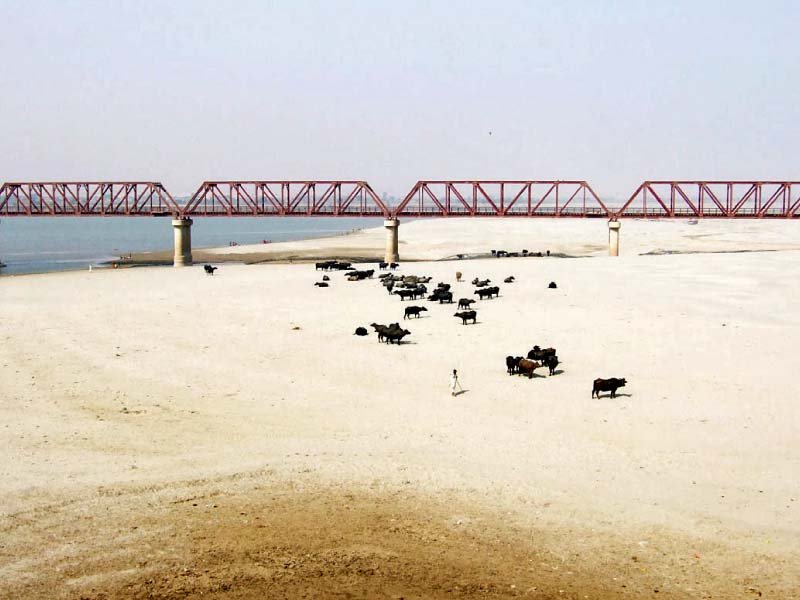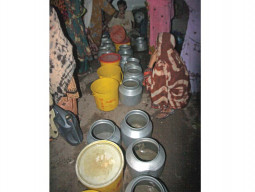
Pakistan’s inability to formulate a clear water strategy and lack of interest in resolving water disputes have encouraged India to initiate 171 new hydropower projects in the disputed region of Kashmir, providing 28,000MW of cheap electricity to its growing economy, said senior energy consultant Suleman Najib Khan in an interview with The Express Tribune.
“Lack of water reservoirs has already caused over a trillion dollars’ worth of economic loss to Pakistan’s economy in the last 30 years, which now manifests itself in the prevalent energy crisis,” said Khan, who also serves as a member of the advisory committee of the Federal Planning Commission.
Diamer-Bhasha Dam: Construction to begin next year
For Khan, Pakistan as a nation is lenient when it comes to the value of water management - whether for drinking, farming, controlling floods, improving environment or generating cheap power.
“Despite being potentially the richest nation in the subcontinent, the country, since independence, had been unable to protect water in its river channels. This led the neighbours to overstep their bounds, sparking disputes in an already heated arena,” he said.
“We are a strange agrarian country that has no interest in protecting the backbone of our economy and has not been able to build mega dams for 41 years now.”
According to him, Pakistan is generating just half a dollar from one cubic metre of water. Compare that to the world average of $8. In some cases, such as that of Japan, the number inflates to an incredible $30.
Contrast
Contrasting Pakistan’s nonchalant attitude with India’s, he noted, Indian nationalists, since independence, have realised the importance of water for growth. They established an organisation - International Commission for Irrigation and Drainage - in 1950 as part of the ‘India First’ agenda.
“Since then, they have positioned themselves at a level of great influence with multilateral institutes and government agencies worldwide. It now serves hundreds of international clients, even multilateral agencies,” he said.
Water scarcity in capital may worsen, says study
“What is most relevant is that they have the tools to analyse accurately the hydrologic cycle of the Indus Basin.”
Under-equipped
Pakistan Commissioner for Indus Waters (PCIW) and the Indus River System Authority (Irsa) had resolved some provincial conflicts (for instance water level appropriation in Punjab and Sindh), said Khan.
However, both bodies lack the required punch due to a lack of technical depth and commitment. “In case of PCIW, the secretariat is shamefully under-equipped and under-staffed with some expertise to face the neighbour, it even depends on India’s data to determine water flows.”
Water and energy experts have recommended the governments to create the Commission for Indus Basin Strategic Analysis (CIBSA). “Let CIBSA educate the nation about hydro-truths as Pakistan now has less than 8% of storage capacity of its 145 million acre feet of annual surface flow,” Khan said.
Pakistan should have at least 200 small, medium and mega dams, unfortunately it only has 61, out of which only two are mega dams, he said.
“If Pakistan can make three more mega dams like Bhasha dam, Kalabagh dam and a general storage dam somewhere up north, things may start going our way.”
Wapda
He said in order to control energy crisis, the revival of Water and Power Development Authority (Wapda) is a must. “National Transmission and Dispatch Company (the bulk transmission company) needs to be returned to Wapda as it is a critical arm of the energy producer.”
KWSB given two weeks to end water crisis
“We should remember that Wapda was started on the model of Tennessee Valley Authority, an American electric utility established in 1933 to face the aftermath of the 1929 market collapse.
“The model successfully stimulated the entire US economy by establishing 26 dams and associated irrigation channels as well as flood control structures,” Khan added.
Perhaps a similar revival is possible in Pakistan.
Published in The Express Tribune, January 3rd, 2016.
Like Business on Facebook, follow @TribuneBiz on Twitter to stay informed and join in the conversation.


































1714129906-0/Clint-Eastwood-(1)1714129906-0-270x192.webp)






COMMENTS (22)
Comments are moderated and generally will be posted if they are on-topic and not abusive.
For more information, please see our Comments FAQ